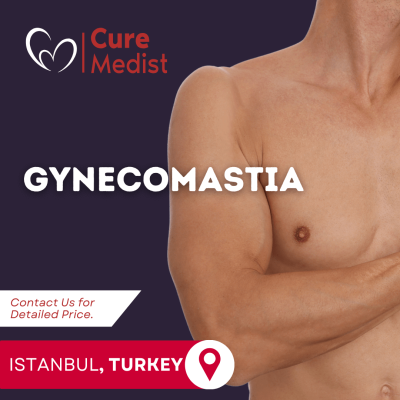Gynecomastia is a medical condition characterized by the enlargement of breast tissue in males. It is a common condition that can affect one or both breasts and can occur at any age. Here’s a detailed overview:
What is Gynecomastia?
Gynecomastia is the benign enlargement of male breast tissue, typically resulting from an imbalance between the hormones estrogen and testosterone. This condition can cause physical discomfort and psychological distress.
Causes of Gynecomastia:
- Hormonal Imbalance:
- Puberty: Hormonal changes during puberty can lead to temporary gynecomastia, which often resolves on its own.
- Aging: Hormonal changes associated with aging can cause gynecomastia, especially in men who gain weight or have health issues affecting hormone levels.
- Medications:
- Steroids: Anabolic steroids and androgen supplements.
- Medications: Certain medications for heart conditions, ulcers, prostate issues, and mental health can cause gynecomastia.
- Substance Abuse: Alcohol, marijuana, heroin, and methadone.
- Health Conditions:
- Liver Disease: Conditions like cirrhosis.
- Kidney Failure: Patients undergoing dialysis.
- Thyroid Disorders: Hyperthyroidism.
- Tumors: Tumors that affect hormone-producing glands.
- Other Factors:
- Obesity: Increased fat tissue can lead to higher levels of estrogen.
- Hereditary: Genetic predisposition.
- Malnutrition and Starvation: Can lead to hormonal imbalances.
Symptoms of Gynecomastia:
- Breast Enlargement: Swelling of the breast gland tissue.
- Breast Tenderness: Pain or tenderness in the breasts.
- Asymmetry: One breast may be larger than the other.
- Nipple Discharge: In rare cases, there can be discharge from one or both nipples.
Diagnosis:
- Medical History: Review of symptoms, medical conditions, medication use, and family history.
- Physical Examination: Assessment of breast tissue, abdomen, and genitals.
- Imaging Tests:
- Mammogram: To rule out breast cancer.
- Ultrasound: To evaluate breast tissue and underlying structures.
- Blood Tests: To check hormone levels and evaluate liver, kidney, and thyroid function.
Treatment:
- Observation: In many cases, especially during puberty, gynecomastia resolves on its own without treatment.
- Medications: If gynecomastia is caused by medication or an underlying condition, addressing the cause can help. Hormone therapy might be considered in some cases.
- Surgery:
- Liposuction: Removes excess fat from the breast area.
- Mastectomy: Removes excess glandular breast tissue. This can be done using minimally invasive techniques with small incisions.
Surgical Procedures for Gynecomastia:
- Liposuction:
- Procedure: Small incisions are made, and a thin tube (cannula) is inserted to remove excess fat.
- Recovery: Generally involves minimal downtime, with most patients returning to normal activities within a week.
- Mastectomy:
- Procedure: Excess glandular tissue is removed through small incisions around the areola or in the chest crease. This can sometimes be combined with liposuction.
- Recovery: May involve a longer recovery period compared to liposuction alone. Patients typically need a few weeks to recover fully.
Recovery and Post-Operative Care:
- Dressings and Support Garments: Patients may need to wear compression garments to minimize swelling and support the new chest contour.
- Pain Management: Pain and discomfort are managed with prescribed medications.
- Activity Restrictions: Patients should avoid strenuous activities and heavy lifting for several weeks.
- Follow-Up Appointments: Regular check-ups are scheduled to monitor healing and remove sutures if necessary.
Benefits of Treatment:
- Physical Comfort: Reduction in breast size can alleviate discomfort and pain.
- Improved Appearance: A flatter, more traditionally masculine chest contour.
- Enhanced Self-Esteem: Reduction in psychological distress and improvement in body image.
Suitability for Surgery:
- Good Candidates: Healthy individuals with significant gynecomastia that has not resolved with medical treatment or observation.
- Non-Smokers: Smoking can impair healing and increase the risk of complications.
- Stable Weight: Candidates should ideally be at or near their ideal weight.
Gynecomastia is a common condition that can significantly impact quality of life. If non-surgical methods do not provide relief, surgical options are available to effectively treat the condition and improve both physical comfort and appearance. Consulting with a qualified healthcare professional or plastic surgeon can help determine the best course of action based on individual circumstances.




